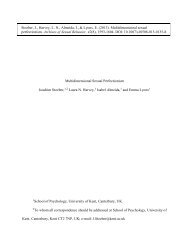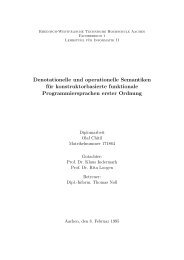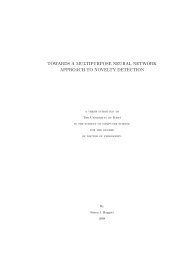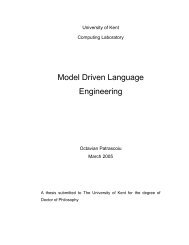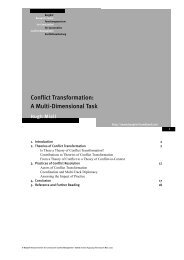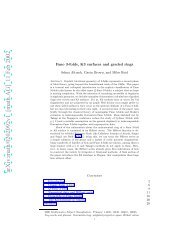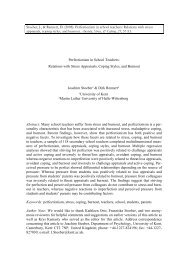Download (640Kb) - University of Kent
Download (640Kb) - University of Kent
Download (640Kb) - University of Kent
You also want an ePaper? Increase the reach of your titles
YUMPU automatically turns print PDFs into web optimized ePapers that Google loves.
Dohrn’s dream for Hellerau was to distinguish it from the purely entrepreneurial<br />
factory town model <strong>of</strong>, say, the Krupp steelworkers’ garden suburb in Essen. For this he<br />
needed a significant cultural enterprise which would ‘civilise’ the commercial imperatives<br />
<strong>of</strong> Schmidt’s Deutsche Werkstätten factory. He found the ideal collaborator for this in the<br />
person <strong>of</strong> the Swiss music pedagogue Emile Jaques-Dalcroze (1865-1950), and<br />
managed to persuade him to relocate his Geneva-based Institute for Rhythmic<br />
Education to Hellerau with the promise <strong>of</strong> a purpose-built school and performance<br />
space. Initially, Behrens himself was considered for the job (his temple-like AEG Turbine<br />
Hall in Berlin had just been completed) but within a short period the commission was<br />
<strong>of</strong>fered to Tessenow. His first designs for terraced and villa houses were just being<br />
realised, and his impeccable craftwork credentials, allied with the implicit promise <strong>of</strong><br />
lucrative timber-frame technology (the Patentwand having just been devised) made him<br />
seem a sound proposition to Schmidt. But it was Dohrn who really trumpeted<br />
Tessenow’s qualities and finally persuaded the great and good <strong>of</strong> Hellerau to<br />
commission him.<br />
Dohrn saw in Tessenow something more than merely a highly competent technician,<br />
the ‘holy carpenter’ in the words <strong>of</strong> the architectural historian Julius Posener (1904-<br />
1996). Dohrn recognised that Tessenow possessed the higher level <strong>of</strong> intellectual and<br />
artistic sensibilities which made him a multi-facetted man <strong>of</strong> the Reform movement. He<br />
was thinking in particular <strong>of</strong> Tessenow’s engagement with the architectural<br />
manifestations <strong>of</strong> theosophy, his spare, unadorned design vocabulary <strong>of</strong> numinous<br />
spaces and planes. Dohrn recognized that the budding architect required a commission<br />
<strong>of</strong> the stature <strong>of</strong> the Festspielhaus to fully develop his aesthetic; what could be better for<br />
this objective than to bring him into contact with his fellow artist Jaques-Dalcroze who,<br />
with his eurhythmy, was attempting to translate music into dance. Dohrn was only too<br />
familiar with Goethe, having completed his thesis on Werther (The Sorrows <strong>of</strong> Young<br />
Werther) a few years earlier; the promise <strong>of</strong> facilitating Tessenow’s architecture <strong>of</strong><br />
“frozen music” (“erstarrte Musik”) to house Dalcroze’s music in motion (“bewegte Musik”,<br />
perhaps?) must have been irresistible.<br />
What would have impressed Dalcroze about Tessenow was the architect’s humility<br />
and lack <strong>of</strong> the normal presumptions associated with the pr<strong>of</strong>ession. Tessenow was a<br />
functionalist avant la lettre, determined to satisfy a client’s needs and not to make a false<br />
dichotomy between ‘artistic’ and ‘pr<strong>of</strong>essional’ imperatives. In the presence <strong>of</strong> Dalcroze’s<br />
artistic and technical collaborators, above all the scenographer Adolphe Appia (1862-<br />
8



